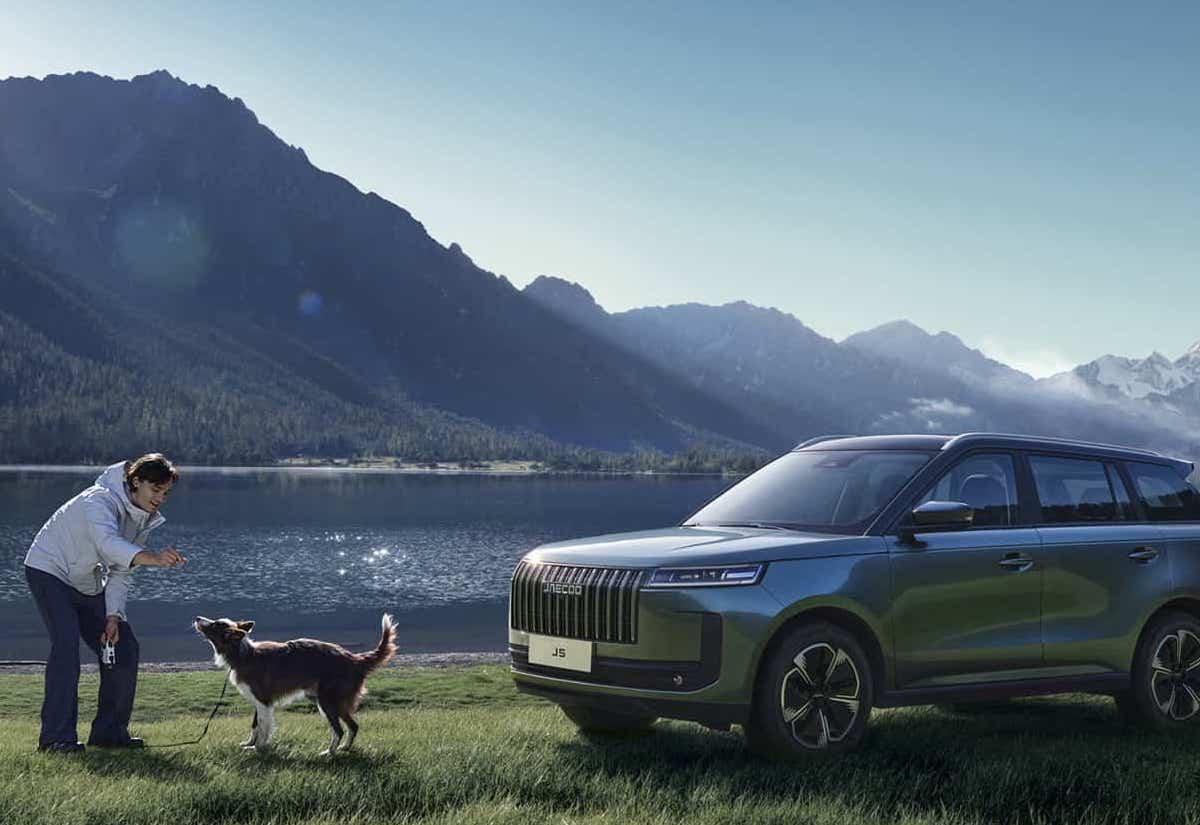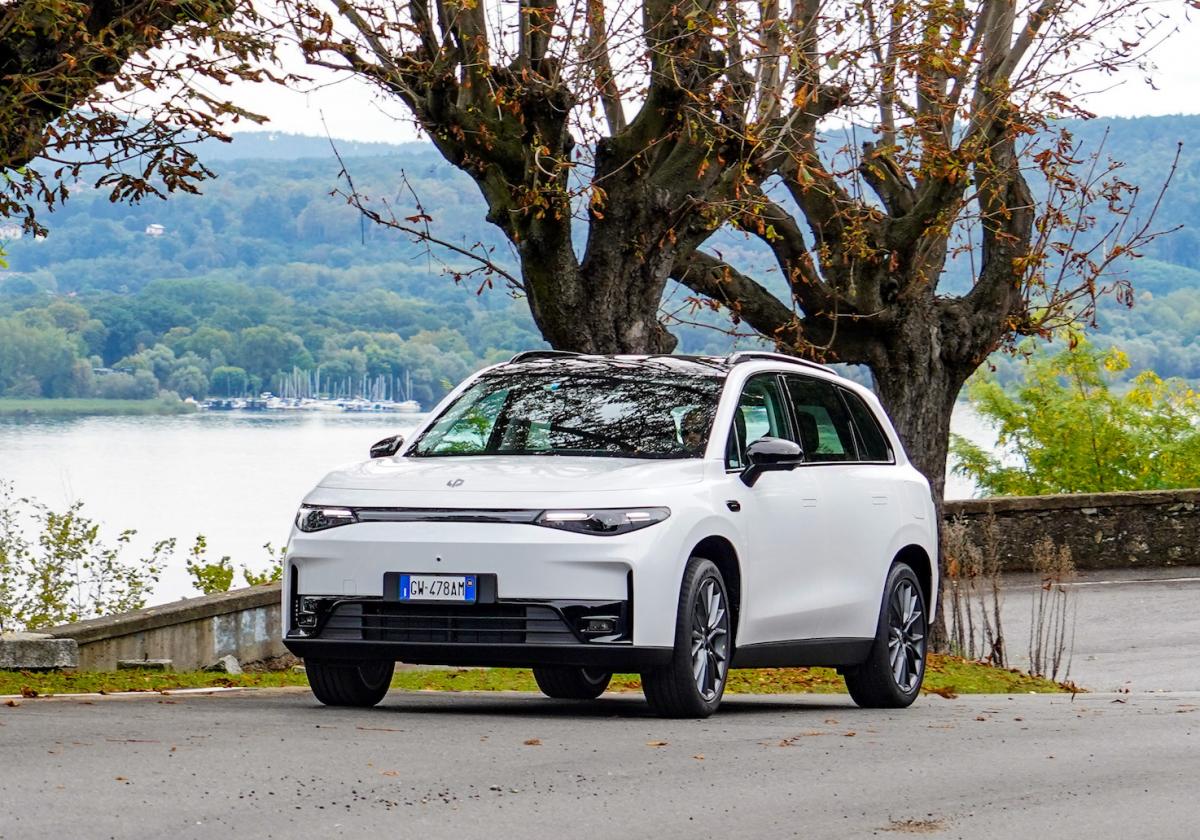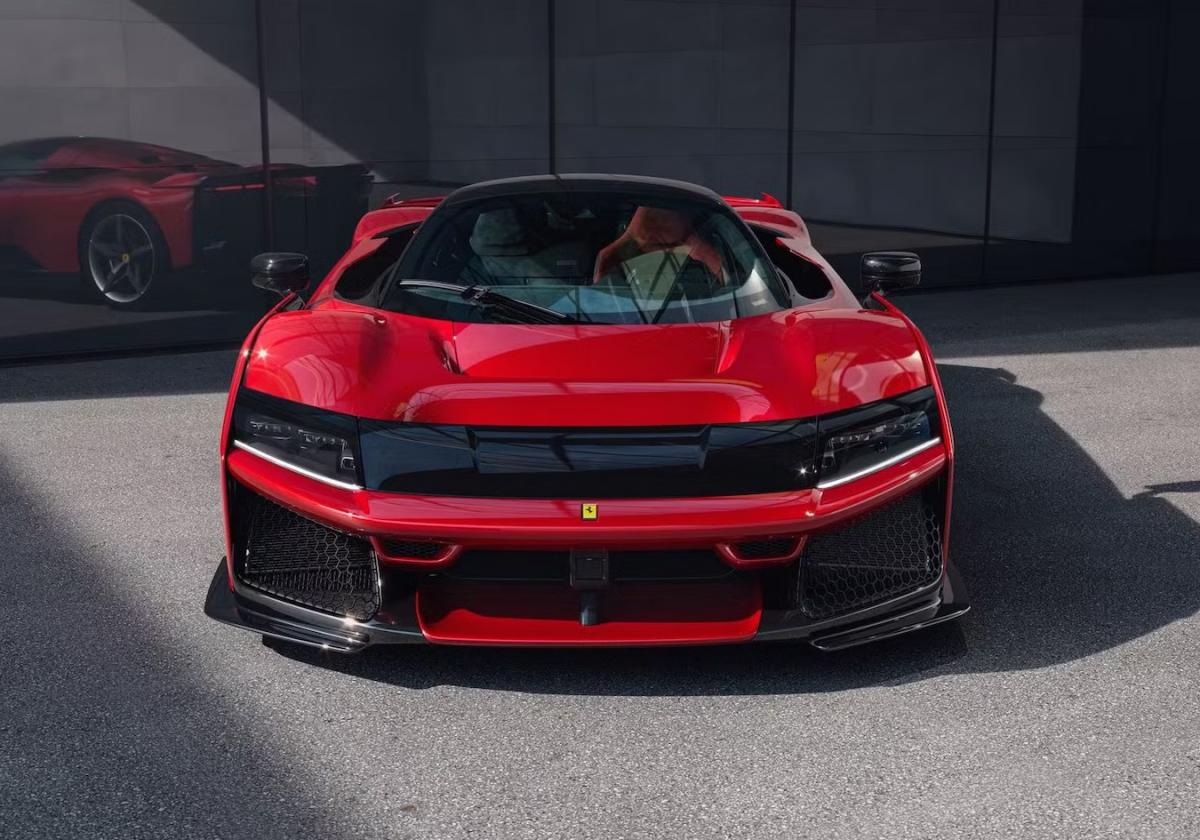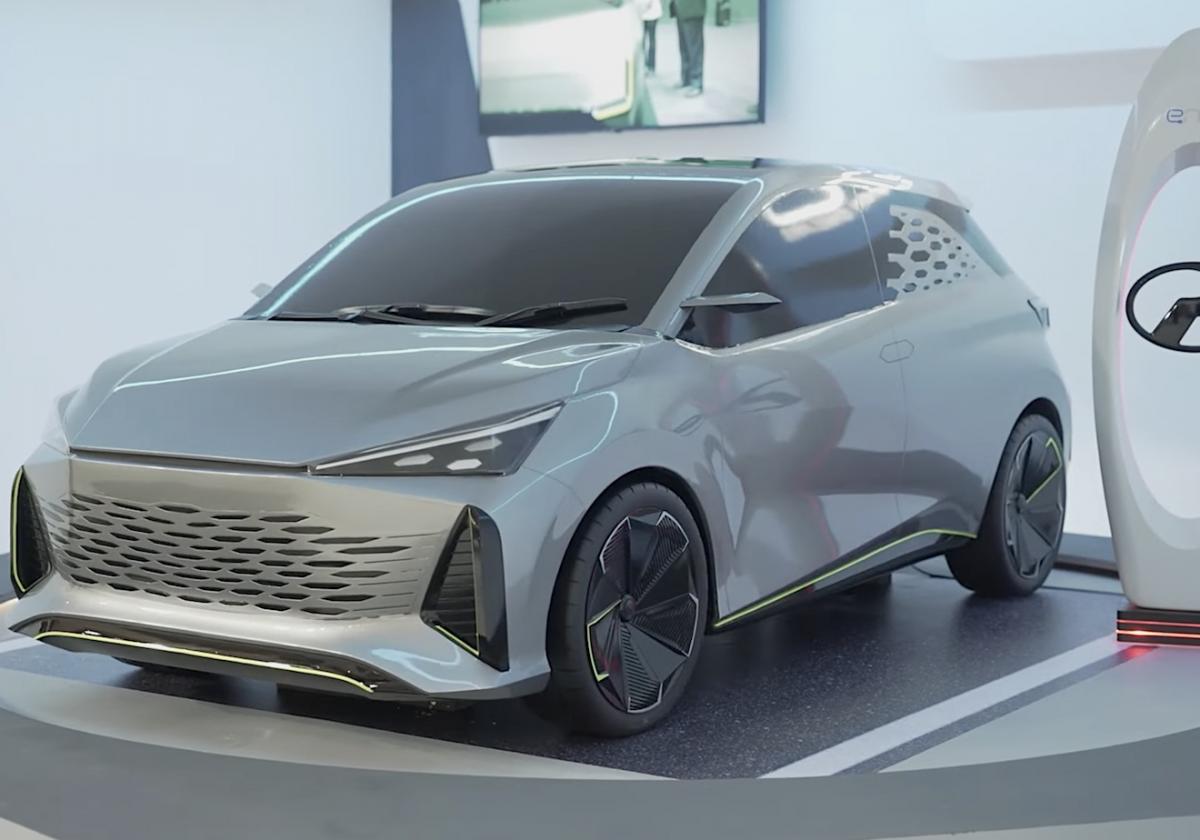- HIGHS
- Exquisite design inspired by 250LM
- V6 hybrid engine is magnificent
- Superb handling
- LOWS
- Haptic controls are annoying
- SF90-influenced cabin design hasn’t moved game along much
- Constant concern at keeping the battery charged
As I crawled passed a bunch of primary school kids in the new Ferrari 296 GTB, I could hear two of them screaming, “hey, where’s the engine? Is that Ferrari broken?” I’d set the car to silent hybrid stealth mode, so it whispered passed them under electric motor power only. Not wanting to shatter their dreams about what Ferraris are traditionally famous for, I quickly flicked the “performance mode” switch and instantly fired up the V6 engine to calm the kids down with a short, sharp burst of Ferrari music.
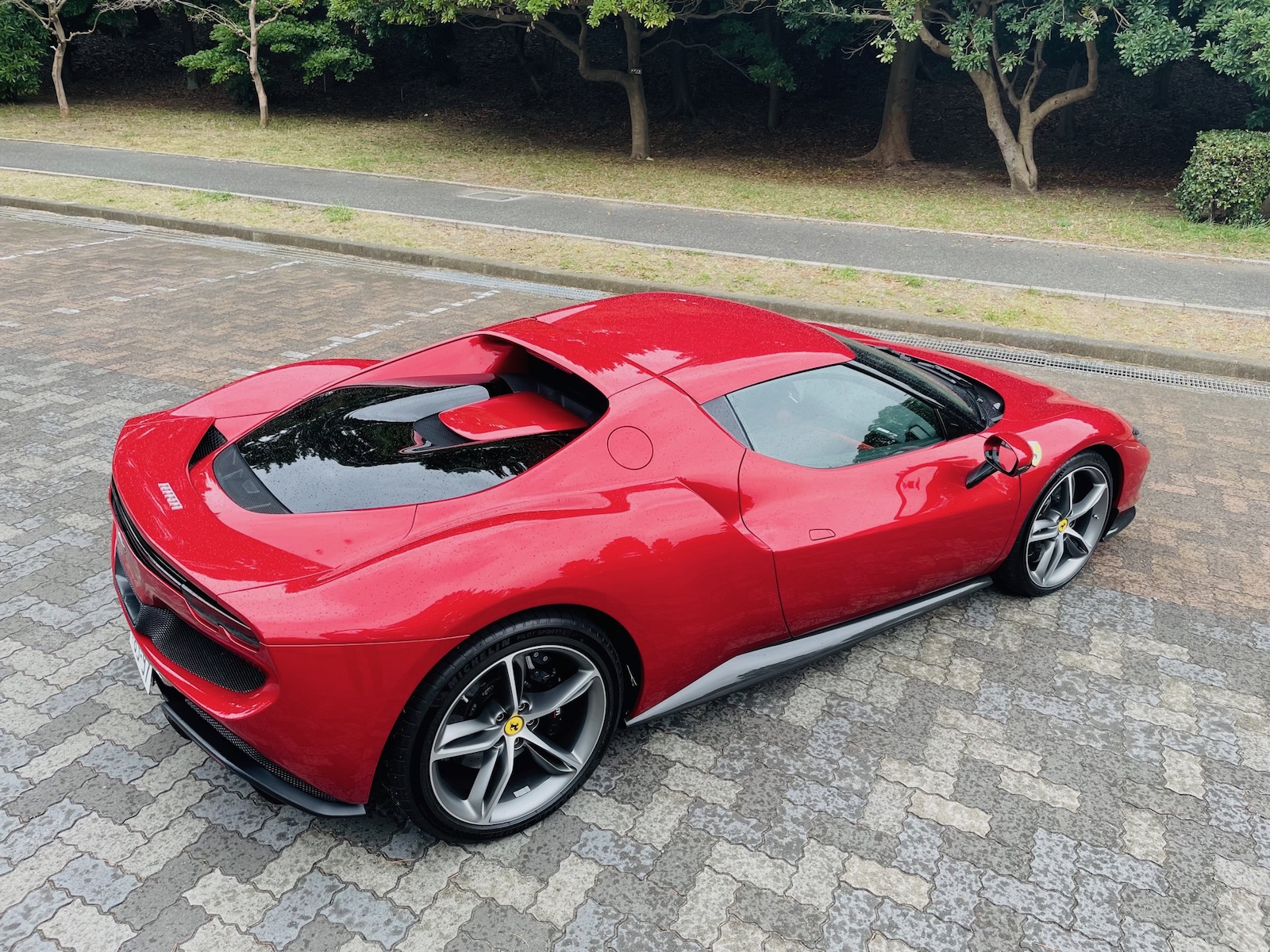
To me, this supercar is a sign of things to come. Within ten years, every supercar will be electrified in some way, either plug-in hybrid or fully electric. I drove the 296 GTB around the streets of Tokyo and spent several hours cruising many of the expressways featured in Fast and Furious Tokyo Drift.
The 296 GTB is not Ferrari’s first hybrid
The 296 GTB looks as gorgeous as it is quick, and has the soundtrack to match, with a volume control that goes from the silent zero to 10. If you’d asked me a decade ago whether Ferrari would ever dump its glorious V8 engine in favor of a V6 hybrid, I’d have asked what you’d been smoking. But times change, and the Prancing Horse is showing without a shadow of a doubt that it fully understands hybrid and electricity, and knows how to package it in unashamed sensuous sheetmetal.
Ferrari, of course, has made electrified cars before. They launched the LaFerrari hybrid and then the SF90 Stradale plug-in hybrid, which seemed at the time like technical experiments, just so they could perfect the breed with the 296 GTB.
Well, here it is—the beautiful, brilliant and beefy 296 GTB. This car is a huge achievement and a worthy successor to the legendary Dino 246 GT of 1969. It’s an inspired collection of kinetic art and complex technical kit that sends a definitive message to the likes of Lamborghini, McLaren and even Porsche. Even though Maranello has introduced some good lookers recently like the F8 Tributo and the Roma, we think the 296 is the sexiest-looking Ferrari since the Dino.


The 296’s styling harks back to the Dino and 250LM
It is proof that engine downsizing and adding hybrid tech are not only acceptable in the 2020s but can improve the brand. It still employs the same aluminum chassis as the F8 Tributo with two seats positioned in front of the rear mid-engined V6. But before we get into the specs of this over-achiever, let’s first check out those erotic curves.
The 296’s clean, beautifully proportioned lines hark back to memorable designs like the Dino and 250LM. Their influence is clear here from the wraparound visor-like windscreen, to the rear haunches and side buttresses, to the side vents and flying bridge at the back which showcases the new engine under a glass deck. The rear end boasts a deployable rear wing, as well as angular rather than rounded lights and a centrally-mounted exhaust that allows for a carbon-fiber diffuser to create downforce.
As you’d expect, there’s a host of clever styling touches at the front end as well that beef up downforce. The first is the ‘T-tray,’ which as part of the bumper, creates pressure on the front end to guide air underneath the body where it is further manipulated by the underfloor vortex generators. Complex stuff, and yes, it’s inspired by F1. Just inboard of the headlights, which are positioned as wide as possible, you will find air ducts that channel air onto the brake calipers.

Its touch-sensitive controls take getting used to
Ergonomically, it’s a mixed bag. The 296’s seats are comfortable enough and covered is soft Italian leather, but could benefit from more adjustment parameters. For a low-slung supercar, it does however deliver sufficient visibility, headroom and legroom, which make it a more comfortable environment than previous Ferraris. The steering wheel is almost round, while the big, easily flickable gearshift paddles stay attached to the column. That doesn’t help the functionality of switches, though. The controls for the lights, wipers and indicators sit on the steering wheel, together with multi-function, haptic touch-sensitive icons for the infotainment, and they take time to get used to and can be fiddly to operate.
There are basically two manettinos dials on the steering wheel that control the car’s behavior. The one on the right is the more traditional version which allows you to select “normal,” “wet,” “race,” or “CT” with all electronic aids switched off. On the left, you have the e-manettino which controls how the electric drivetrain behaves. You have ‘e-Drive’ which is battery power only, “hybrid” and “performance” which allows you to wake up the internal combustion engine. You also have a “qualify mode” which permits you to access the full 819-hp, normally on a race track.


The 2.9-liter V6 hybrid pumps out 819-hp and you know it
Ferrari’s new rear mid-engined Berlinetta has discarded the F8’s V8 engine for an all-new 2.9-liter V6 hybrid engine. That’s where the name comes from. It works alongside an electric motor and compact 6.0-kWh battery pack to drive the rear wheels. That feeds a 165-hp electric motor that’s sandwiched between an all-new V6 and a magically engineered, lightning-quick-shifting 8-speed twin-clutch gearbox. Total output is a mind-boggling 819-hp, and 546 lb-ft of torque. That’s 110 more hp than the Tributo. It jumps from zero to 60-mph in just 2.8 seconds on its way to a 205-mph top speed.
The 296’s specs are prodigious, but it’s the way the power is delivered that makes this such a sublime package. Integrating an electric motor, a gasoline engine, twin turbos and an 8-speed gearbox to perform in sync in a high-performance car is no easy task. When feathering the throttle to the 8500 redline, the last thing you want is a lag in response. This Ferrari has no such worries, however, as the power band is surprisingly linear, feeling more like a V12 but with even more bottom-end torque thanks to the motor. Yes, the car can cruise up to 85mph in EV mode, but when that engine starts purring, especially above 4000 rpm, it sounds throaty and powerful, just like a Ferrari should sound. The lack of a V8 does not detract from the car’s aural capability.
One thing a driver needs to pay special attention to, however, is the charge level of the batteries. The EV-only range is 25kms or around 15 miles and drivers are recommended by Ferrari to try to maintain at least 5-6km of charge, otherwise, the car may be difficult to start sometimes. I can’t help but feel a larger battery might fix this issue.



This Ferrari gains an EV mode but loses nothing in performance
I tried it in normal and race modes and thanked the gods when the protective cloak—traction control— intervened once or twice to bring the rear end in line with an over-zealous right boot extension. One only dares to flick the manettino dial to “CT” mode and switch off the electronics aids altogether when pushing the limits a race track.
The steering is exquisitely weighted and turns in as precisely and accurately as the Ferrari 488 Pista I tested several years ago. It gives you loads of feedback and will only understeer when you are pushing silly speeds into a corner. Ride quality was surprisingly compliant and comfortable even considering the low-profile 20-inch tires.

The brakes are nothing short of phenomenal. By-wire braking is becoming common on hybrids and electric cars and combined with Michelin Posit Sport 4S tires, the 296’s stoppers were immense and confidence-inspiring with excellent pedal feel.
In gaining EV ability, the 296 loses nothing in the driving experience. This Ferrari is an absolute blast to drive. While that plug-in powertrain is supremely powerful, it also has other advantages. It starts off in hybrid mode by default which means you take off in silent stealth mode, without igniting the V6 engine. And to be honest, that is a rather cool feature when you don’t want to annoy your neighbors early in the morning.
The brakes are yet another appealing feature of the 296. By-wire braking is becoming common in hybrids and electric cars, and this Ferrari’s brake pedal feel is confidence-inspiring, its stopping power is prodigious, and it boasts minimum fade.
The $322,000 starting price is a high hurdle but in the world of supercars is par for the course.

CONCLUSION
The 296GTB is a piece or art for the road and race track. Its sumptuous lines turn heads wherever it goes and the coupe sounds phenomenal doing it. Only those buyers allergic to electric cars would opt for the F8 over the 296. Its V6 hybrid powertrain is outstanding, from the quiet stealth mode to a screaming operatic roar spinning at 8000 rpms. For Ferrari, this is a significant step forward and its brilliant electric drivetrain adds depth and finesse to the supercar genre at a time when the pressure to electrify is intense.
2022 Ferrari 296 GTB Specs
- Base price: $322,986
- Powertrain: 2.9-liter twin-turbo V6 plug-in hybrid,
- Transmission: 8-speed dual-clutch, rear-wheel drive
- Horsepower: 819 / 8,000 rpm
- Torque: 546 lb-ft / 6,250 rpm
- Curb weight: 3,527 pounds
- Seating capacity: 2
- 0-60: 2.7 seconds, Top speed: 205-mph



